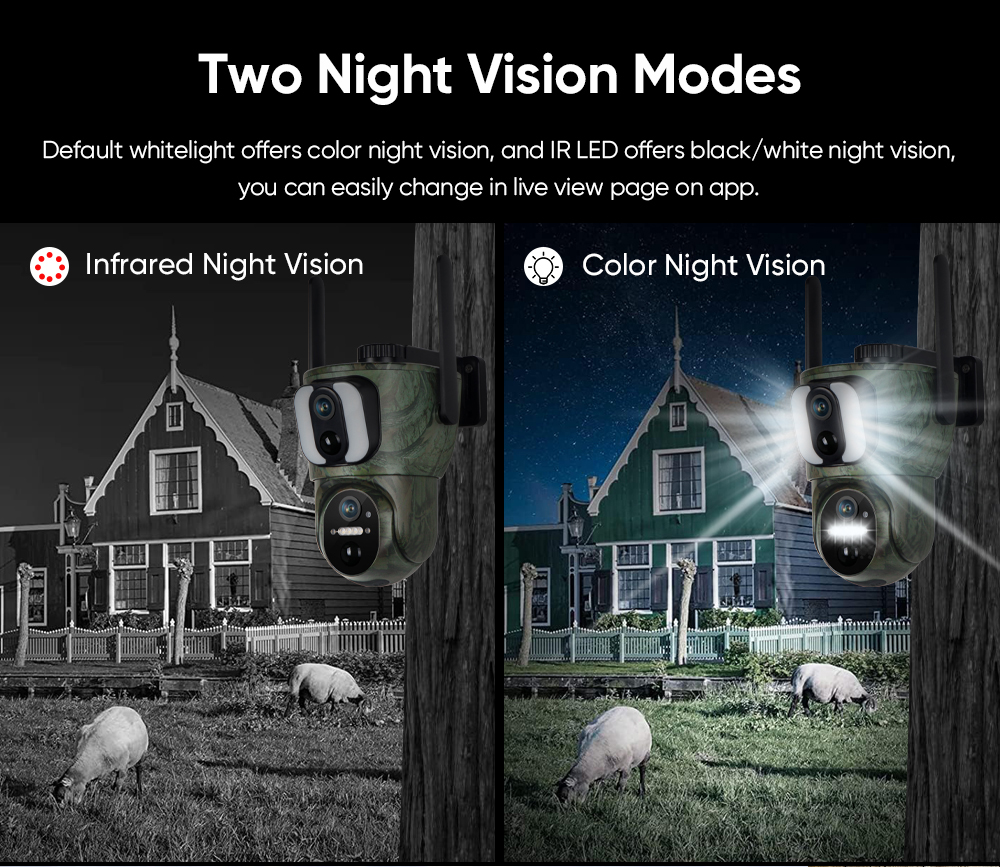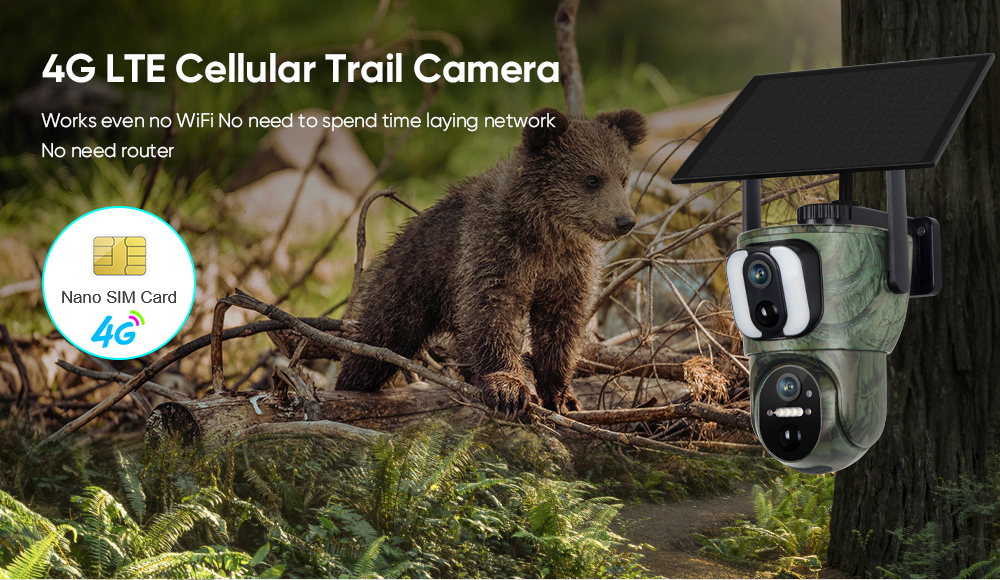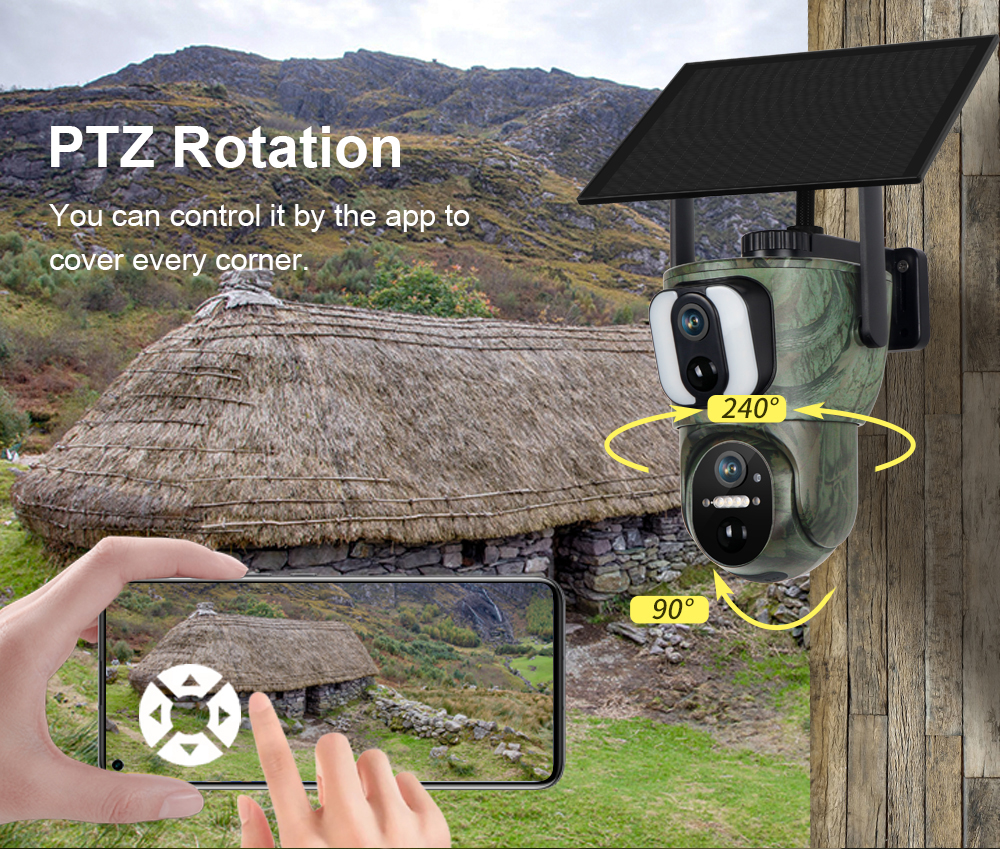Indice dei contenuti
ToggleWatching wildlife in their natural habitat is one of the most amazing experiences, but many animals are most active at night, making daytime observations nearly impossible. This is where night camera for wildlife come into play. These specialized devices allow you to capture images and videos of nocturnal animals, giving you a chance to unlock the mysteries of the nighttime world.
In this article, we’ll explore choosing the best night camera for your needs, including the differences between infrared and night vision technologies, tips for improving performance in low-light conditions and optimizing your camera settings for the best results.

Why a Night Camera is Essential for Observing Nocturnal Animals
A night camera for wildlife is essential for observing animals when they are most active—during the night. These cameras are specifically designed to function in low-light conditions, capturing clear images and videos even when it’s dark outside. The ability to monitor wildlife continuously, without disturbing them, is a major advantage of using night cameras. With motion detection sensors, the camera activates only when it detects movement, ensuring that no moments are missed.
The importance of night cameras goes beyond mere observation. These cameras provide valuable data on animal behavior, migration patterns, and population dynamics. Researchers and conservationists can use this information to make informed decisions and help protect wildlife. Additionally, these cameras allow for safer observation from a distance, reducing the risk of encountering dangerous or aggressive animals in remote areas.
Infrared vs. Night Vision: Choosing the Right Technology
When selecting a night camera for wildlife, it’s important to understand the different technologies available, especially infrared (IR) and night vision (NV). Both serve the purpose of capturing images in low-light conditions, but they operate in distinct ways.

Infrared (IR) Technology
Infrared (IR) technology is one of the most commonly used in wildlife cameras. IR cameras emit invisible infrared light, which illuminates the scene and allows the camera to capture images or videos. These cameras are typically more affordable, offer good performance across a range of lighting conditions, and have a longer battery life.
However, they often produce black-and-white images, though some high-end models can provide color images under certain low-light conditions. A disadvantage of IR cameras is that the infrared light, while invisible to humans, can be detected by some animals, potentially disturbing them and causing them to flee.
Night Vision (NV) Technology
On the other hand, night vision (NV) cameras use image intensifiers to amplify the existing light in the environment, enabling them to capture color images even in near-total darkness. The primary advantage of NV cameras is their superior image quality, especially in very low-light conditions. These cameras tend to produce clear, colorful images, making them ideal for observing wildlife in a more natural and vibrant setting.
However, NV cameras are generally more expensive than IR cameras, and they often have shorter battery life. Additionally, they may not perform as well in bright light, making them less suitable for environments with frequent light exposure.
Enhancing Performance in Extremely Low-Light Environments
Even the best Tree Camera or critter camera can face challenges when capturing images in extremely low-light conditions. While modern cameras have advanced sensors and lighting technologies, there are a few ways to optimize performance in dark environments.
Choosing the Right Location
Location plays a crucial role in improving image quality. Choose a spot with minimal light pollution, such as away from streetlights or car headlights, which can interfere with the camera’s ability to capture clear images. The camera’s sensor needs as much ambient light as possible to function properly, and these external light sources can create overexposure or unclear footage.
Using External Lighting
For particularly dark locations, consider using external lighting to supplement the camera’s built-in illumination. Low-powered infrared spotlights are ideal for boosting visibility without scaring off wildlife. Additionally, the size of the camera’s sensor can impact how well it performs in low light.
Importance of Camera Sensor Size
Cameras with larger sensors gather more light, leading to clearer, higher-quality images. If you’re using the camera in remote areas for extended periods, invest in high-quality batteries. Low battery levels can affect the camera’s ability to capture clear images, so ensure the batteries are fully charged and have sufficient capacity for long-term use.
Optimizing Camera Settings for Better Wildlife Photography

To ensure you capture the best footage, optimizing your night camera for wildlife settings is essential.
Adjusting Sensitivity
Adjusting sensitivity and exposure time can have a significant impact on image clarity. Increasing the camera’s sensitivity (ISO) allows it to capture more light, but this can also introduce noise, which can degrade image quality. Finding the right balance between light sensitivity and image clarity is key, and experimenting with different ISO settings will help you determine the ideal configuration.
Exposure Time
Exposure time also plays a crucial role in capturing clear images. A longer exposure time allows the camera to gather more light, but it can lead to motion blur if the animal moves too quickly. Adjusting the exposure time based on the anticipated speed of the animal and the available light will help you capture clear, sharp images.
Fine-Tuning Infrared Light Intensity
Another important setting is the infrared light intensity. If your camera uses infrared lighting, it’s essential to adjust the intensity to avoid overexposing images or startling animals. Begin with a low intensity and gradually increase it until you achieve the desired quality without disturbing the wildlife. Some cameras allow you to remove the IR filter, which can improve low-light performance, although it may affect the camera’s ability to capture colour images.
Experimenting with Triggering Modes
Many night cameras for wildlife offer multiple triggering modes, such as motion detection, time-lapse, or interval shooting. Experimenting with these modes will help you capture the most relevant footage based on the behaviour of the animals you are observing.
Selecting the Right Night Camera for Your Needs

Selecting the best night camera for wildlife depends on several key factors. Below are some factors that you should keep in mind when you are going to buy a trail camera:
1. Budget and Features
One of the most important factors to consider is your budget. Night cameras range in price from affordable to high-end models, so it’s essential to choose one that fits within your budget while offering the features you need.
2. Image Quality and Resolution
Image quality is another important factor. Look for a camera with high resolution, good color reproduction, and the ability to capture clear footage in low-light environments. The better the camera’s resolution, the clearer the images will be, which is particularly important when observing small or distant animals.
3. Battery Life and Durability
Battery life is also crucial, especially if you plan to place the camera in a remote location where access to power is limited. Choose a camera with a long battery life or one that supports external battery packs or solar panels for extended use. Durability is another consideration. Make sure the camera is weatherproof and able to withstand the elements. Outdoor cameras need to be able to handle rain, snow, and varying temperatures without failing.
4. Ease of Use and Setup
Ease of use is another factor to consider. Look for a camera with an intuitive interface and simple settings. A camera that is easy to set up and adjust will save you time and frustration in the field, allowing you to focus on capturing wildlife.
Why Choose LS VISION for Your Wildlife Camera Needs
For anyone in need of a high-performance Tree Camera for wildlife, LS VISION is a top choice. Known for their durable, weatherproof construction, LS VISION cameras are designed to withstand the harshest outdoor conditions. Their advanced infrared and night vision technologies ensure clear, high-quality images, even in low-light environments.
LS VISION’s cameras also come with long battery life, making them ideal for long-term monitoring. With exceptional customer support and after-sales services, VISIONE LS ensures that you get the most out of your investment.
To learn more about their range of cameras or to make a purchase, feel free to reach out via Phone: at +86 13662574726 or Email: at Jennylee@lishigroup.com. Let LS VISION help you capture the wonders of the wild, no matter the time of day or night.


